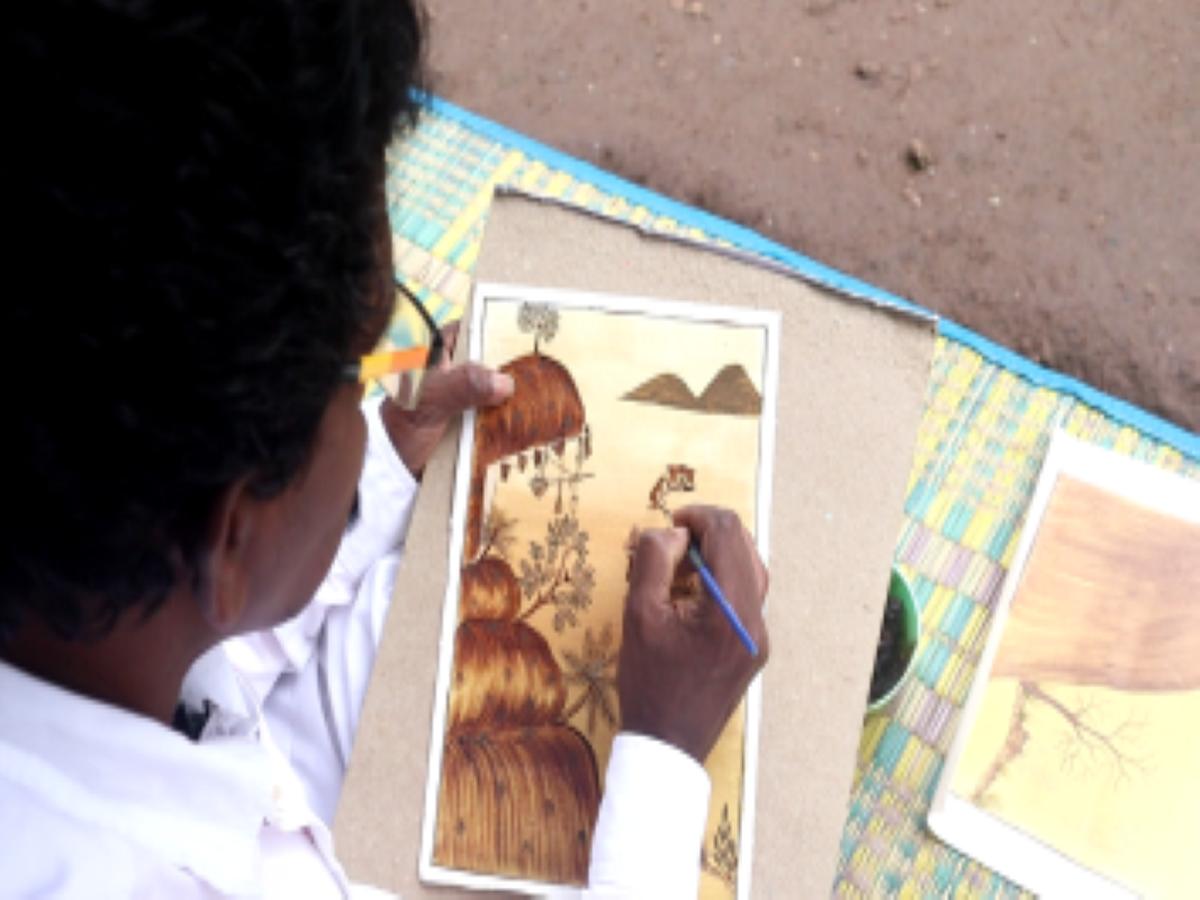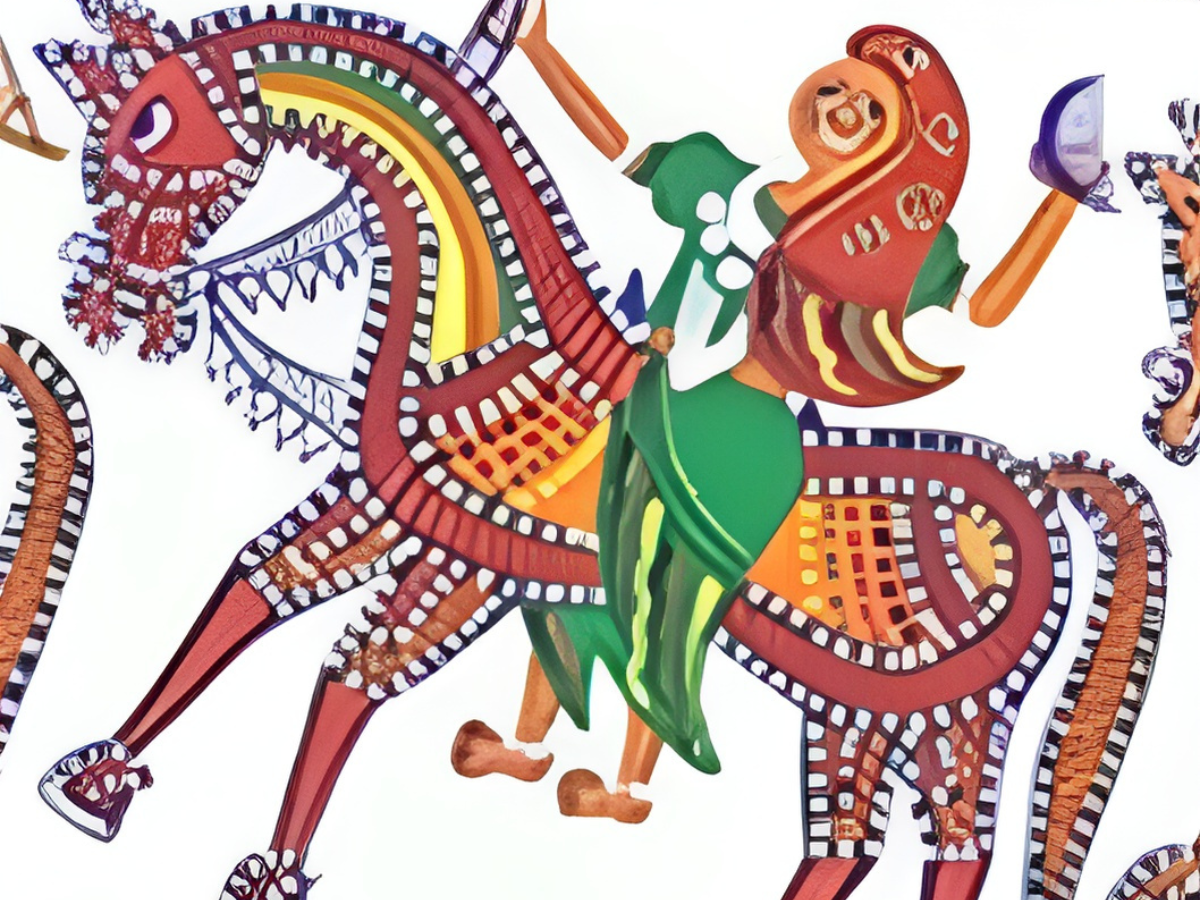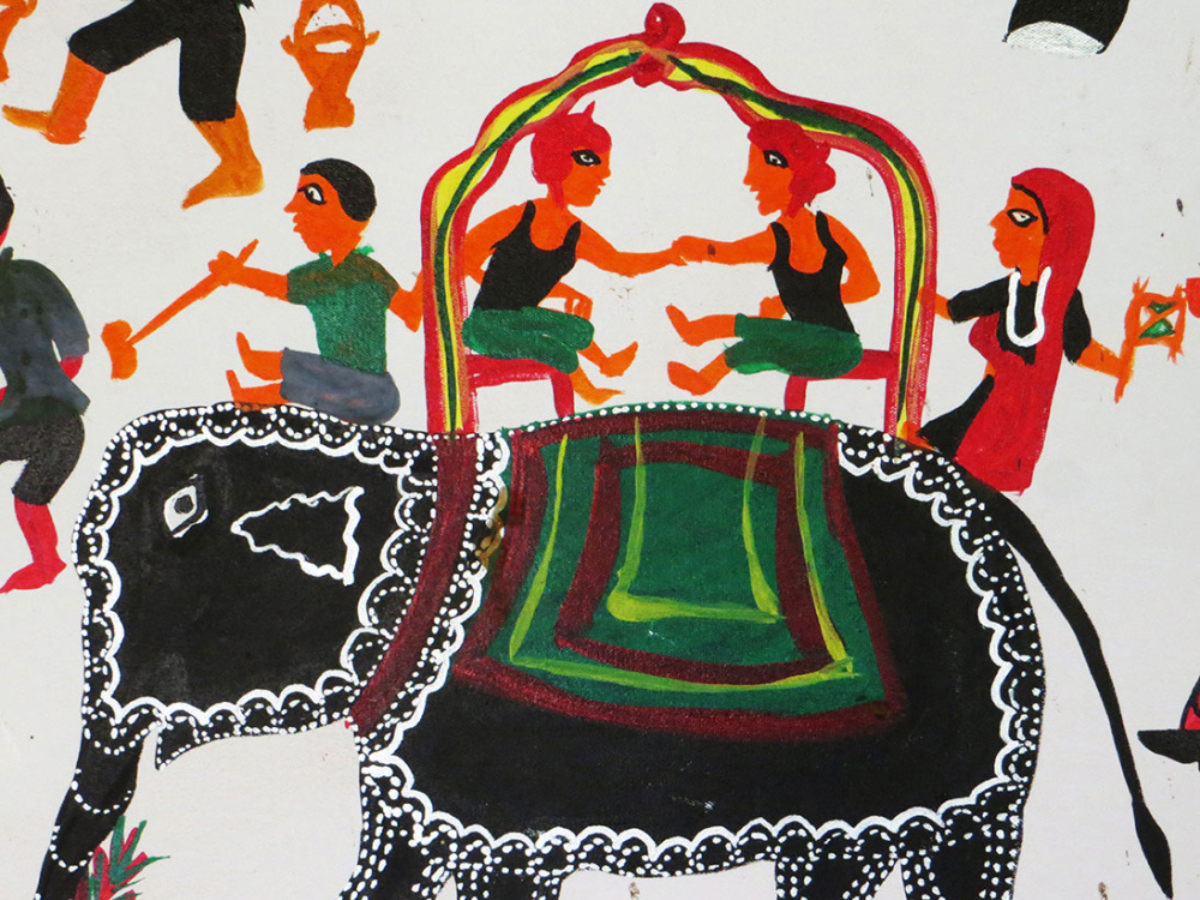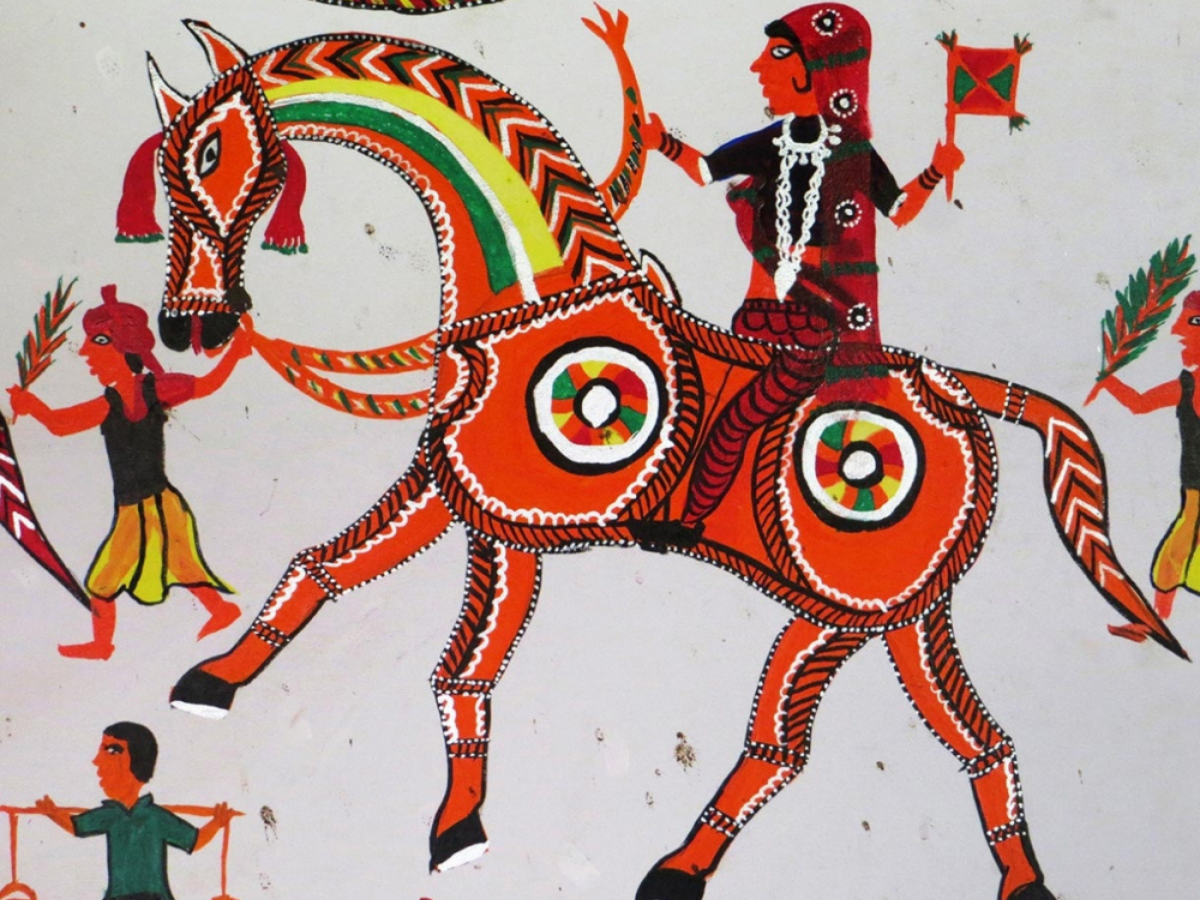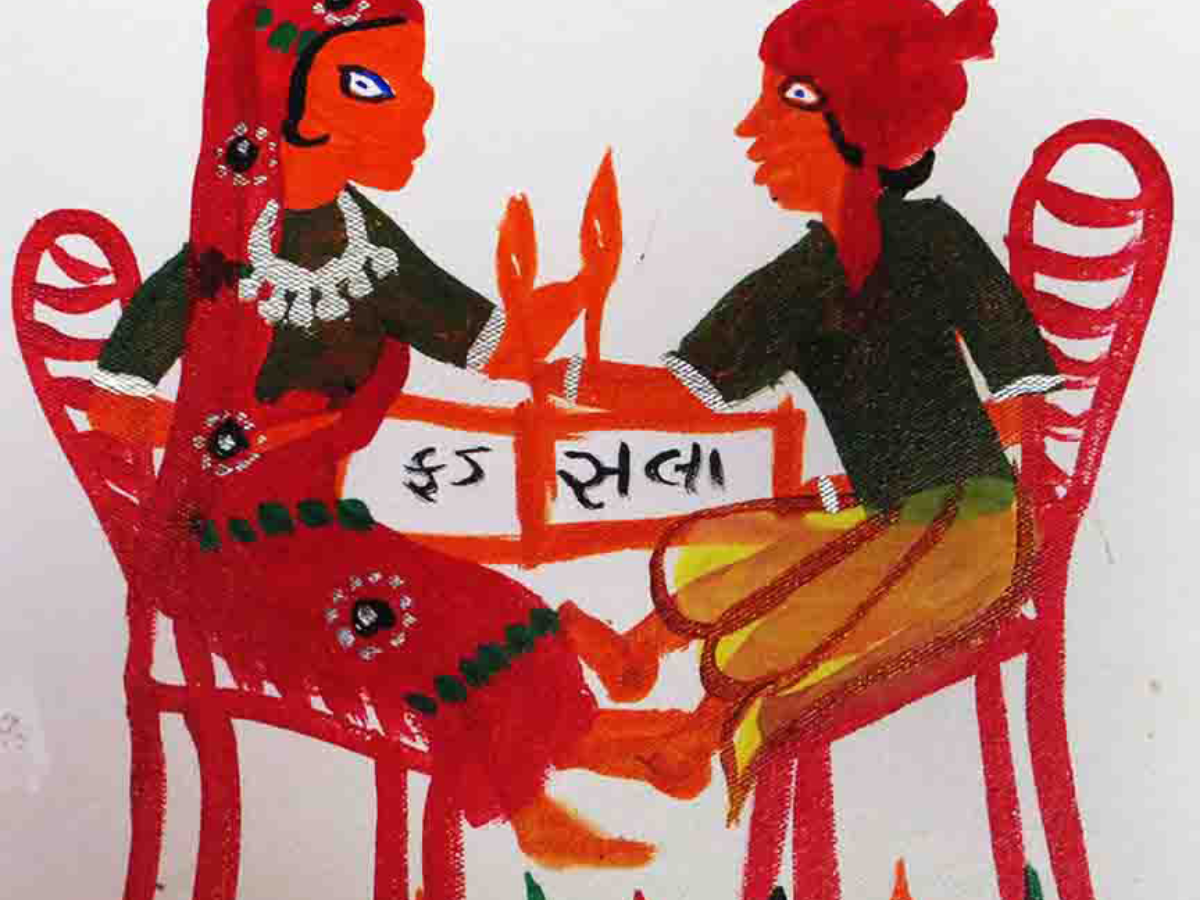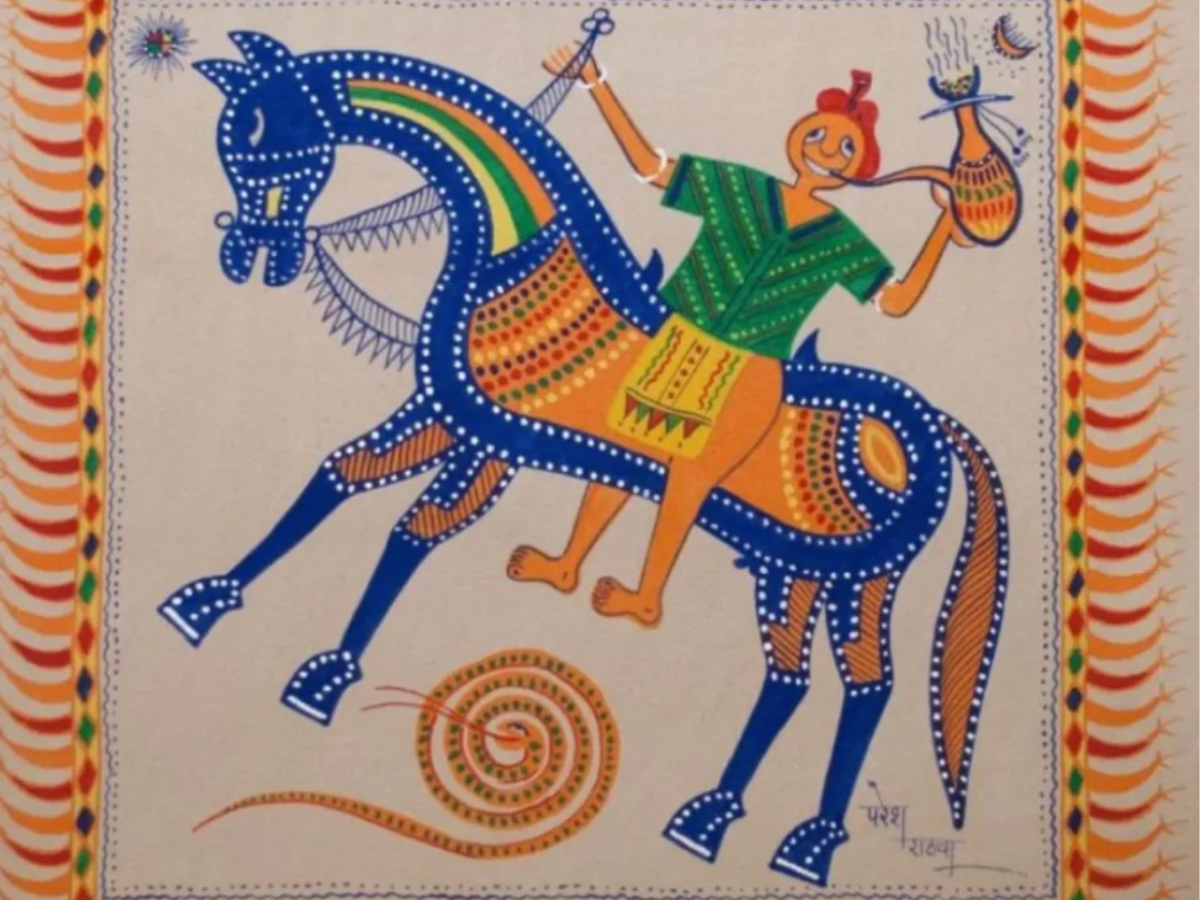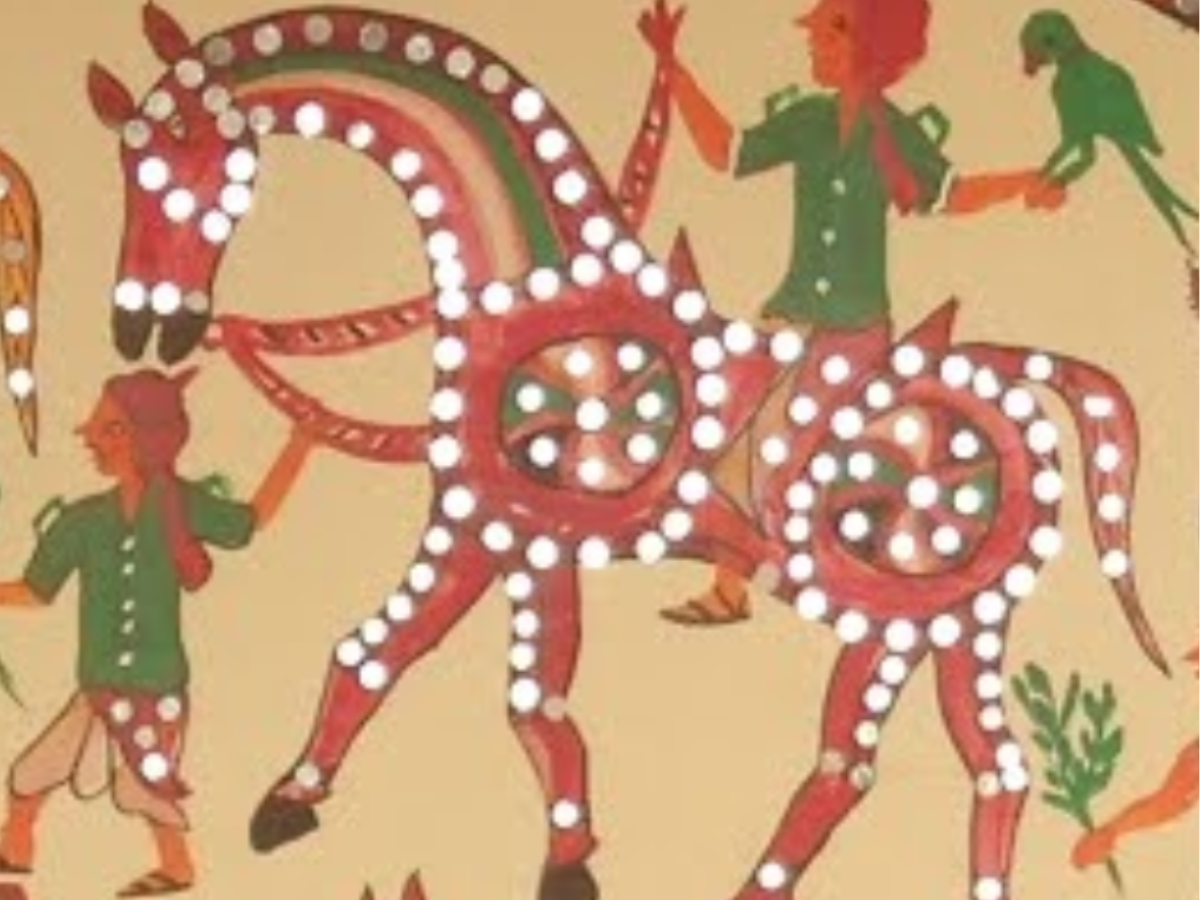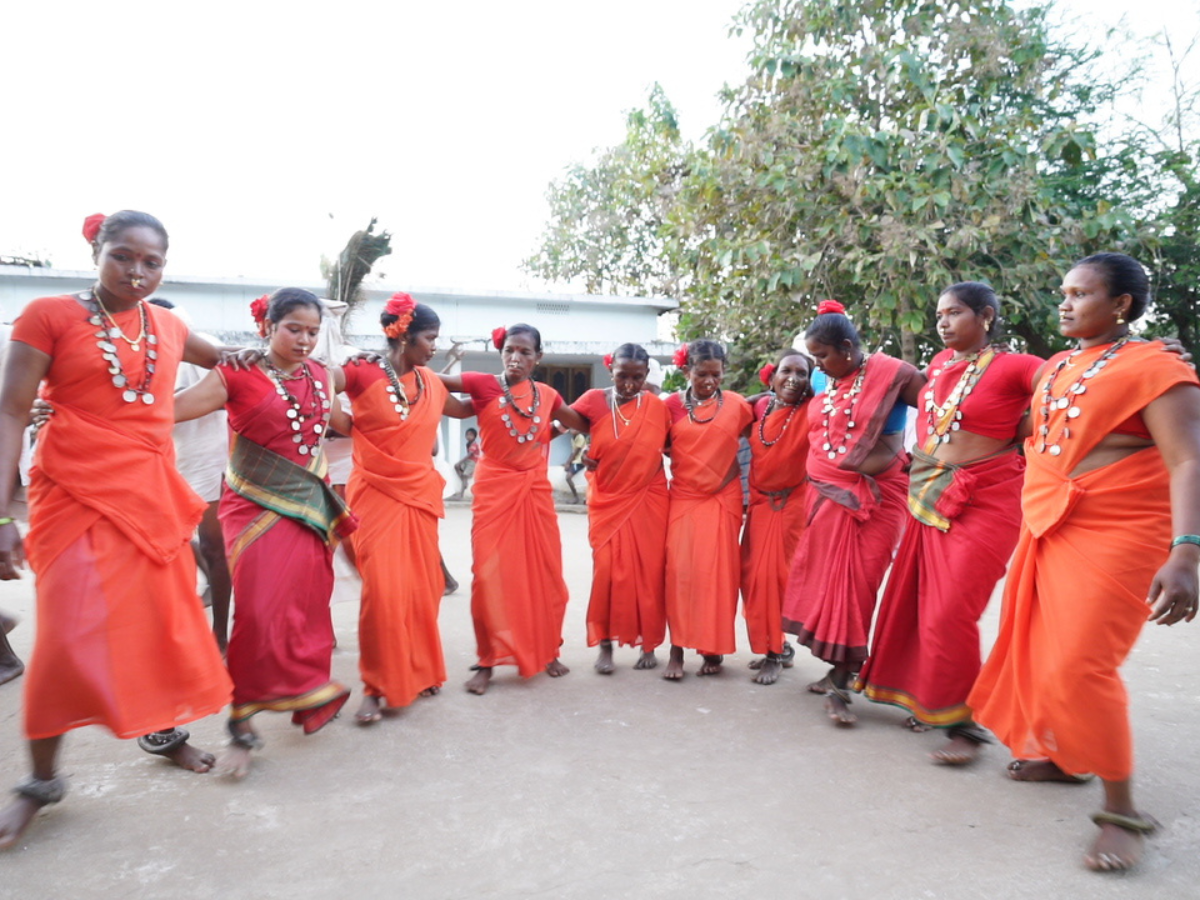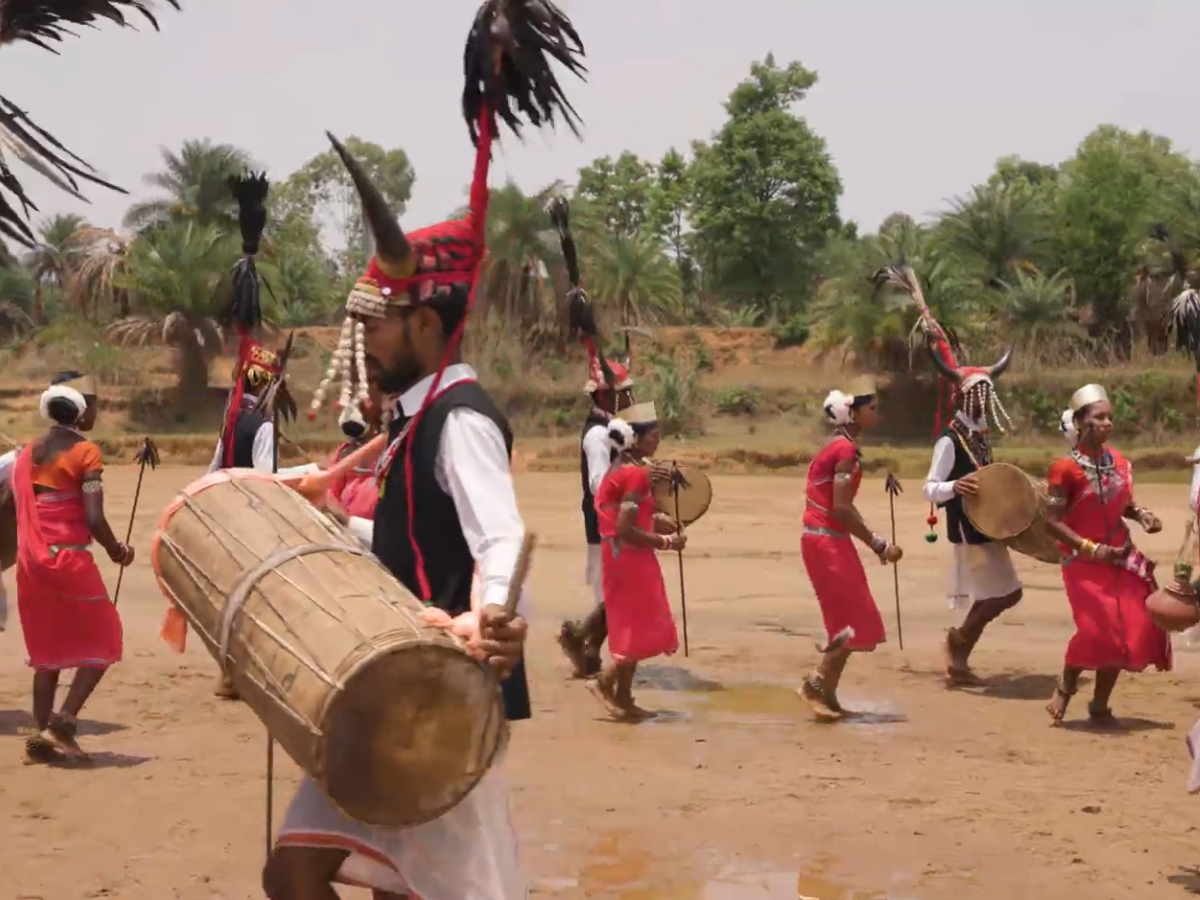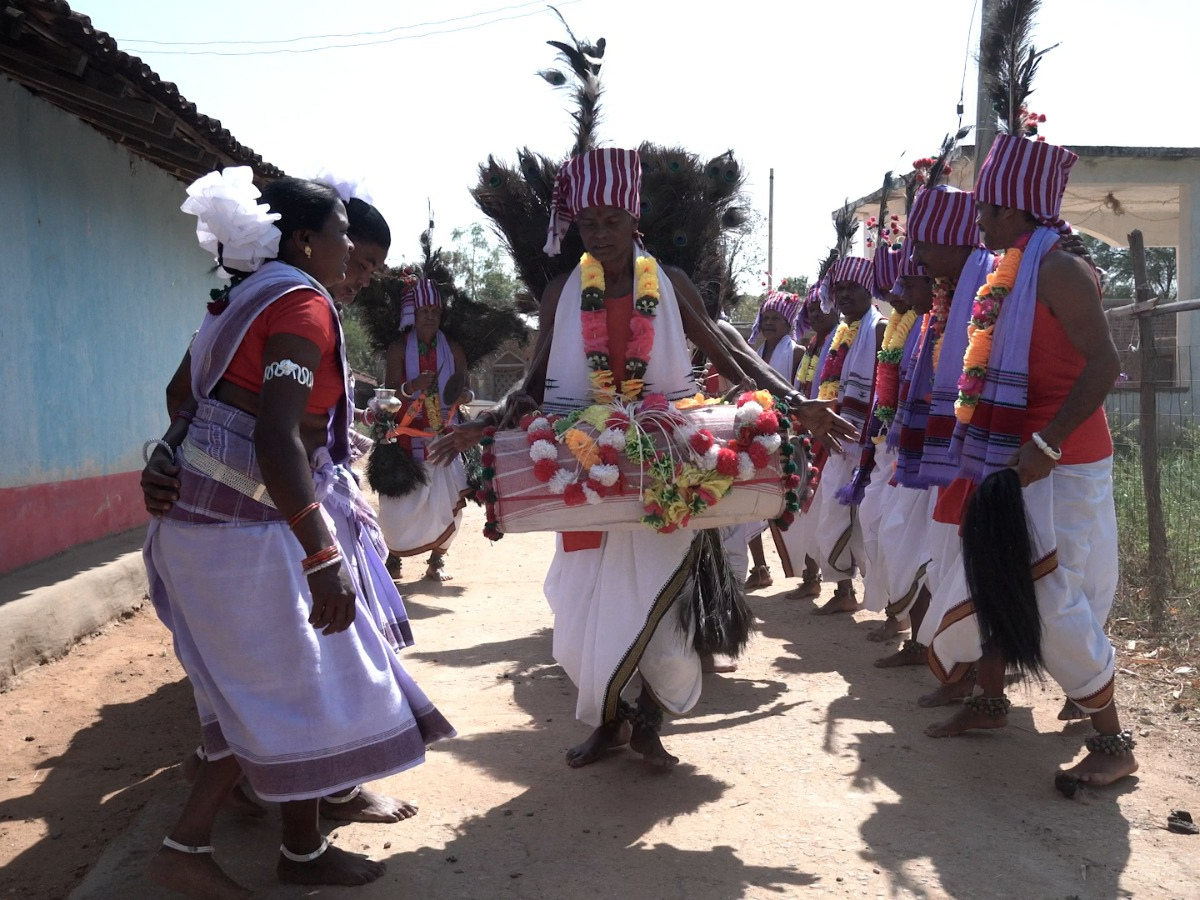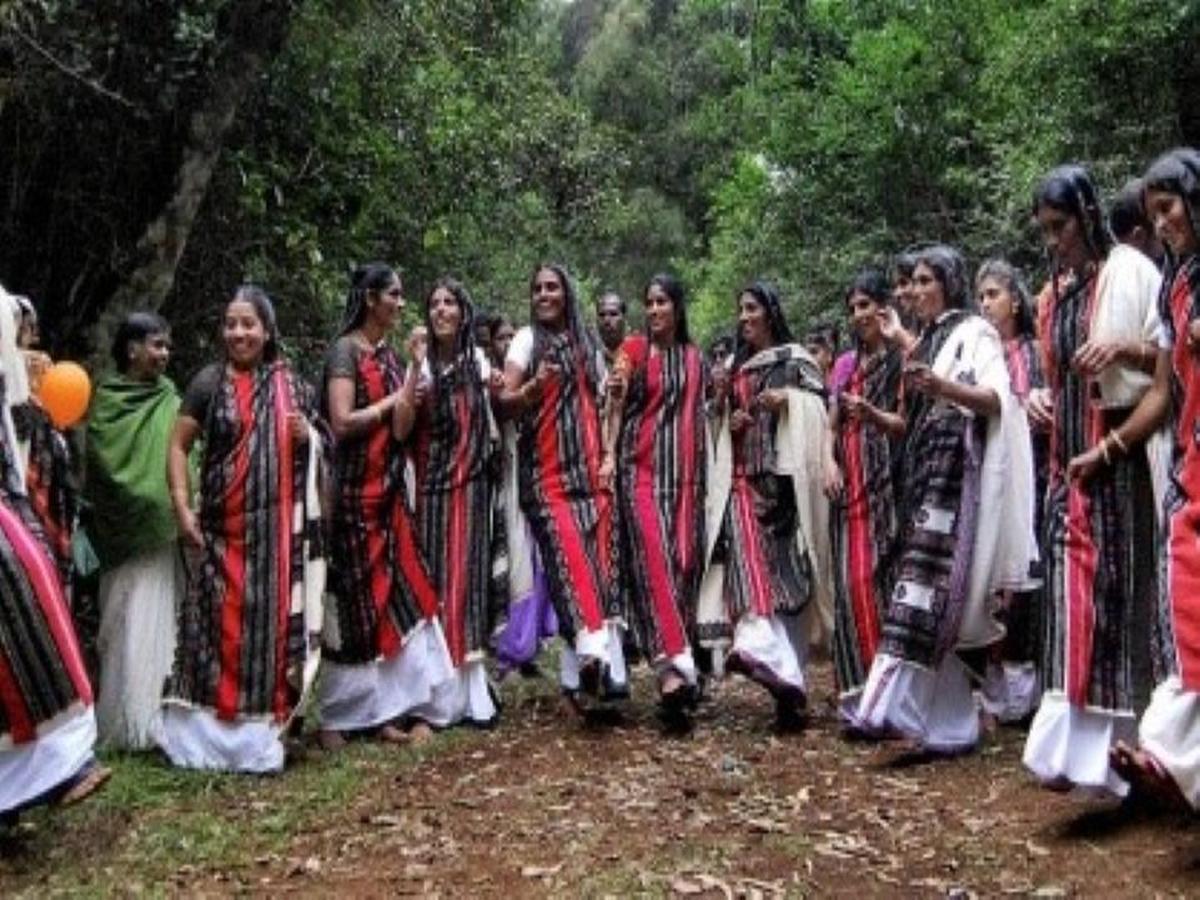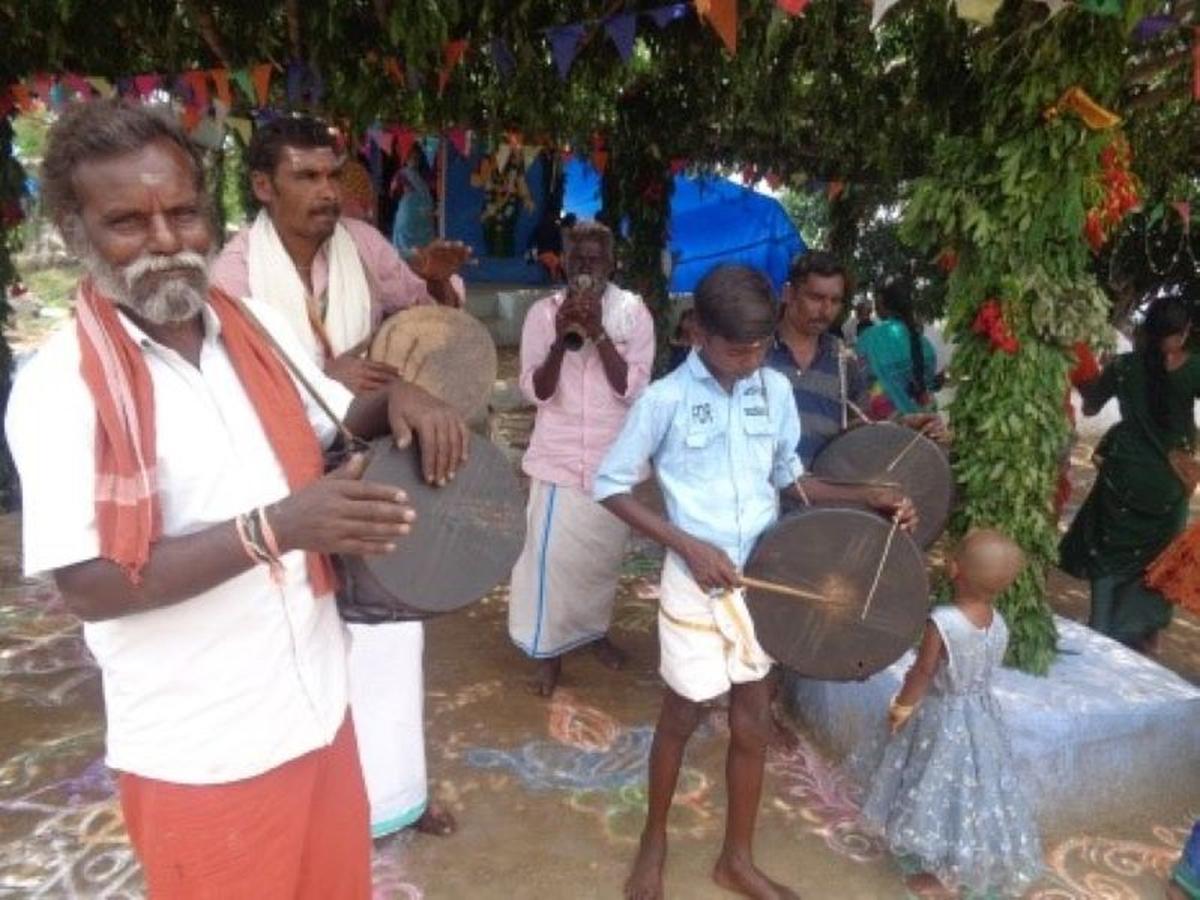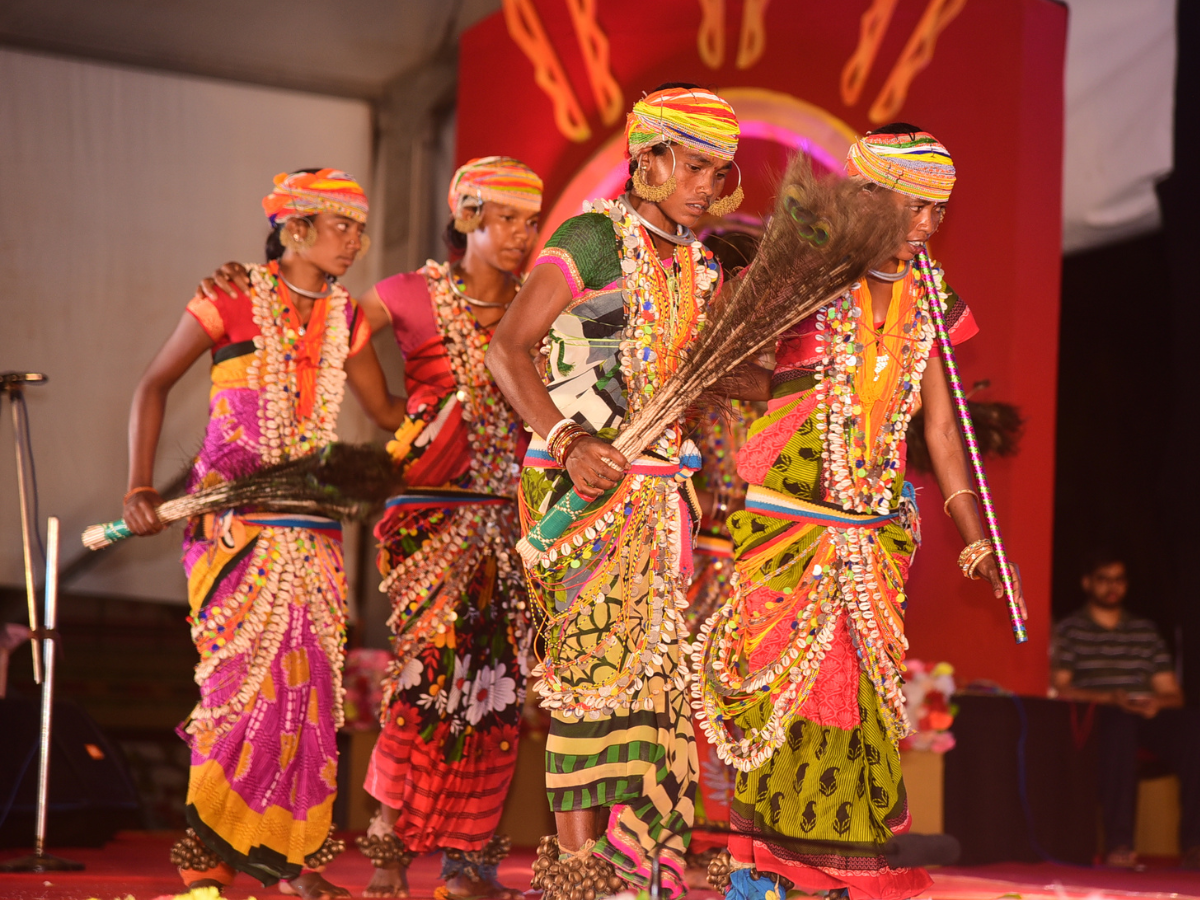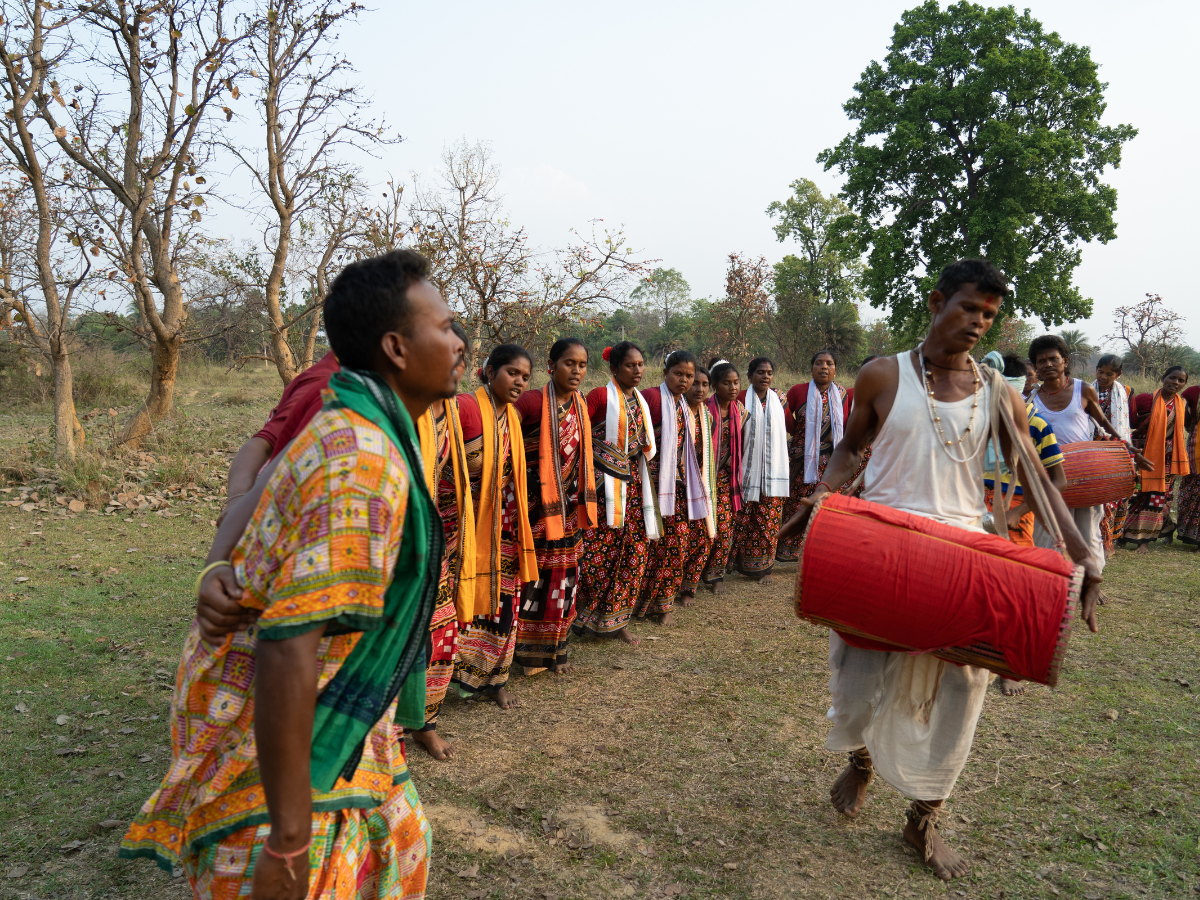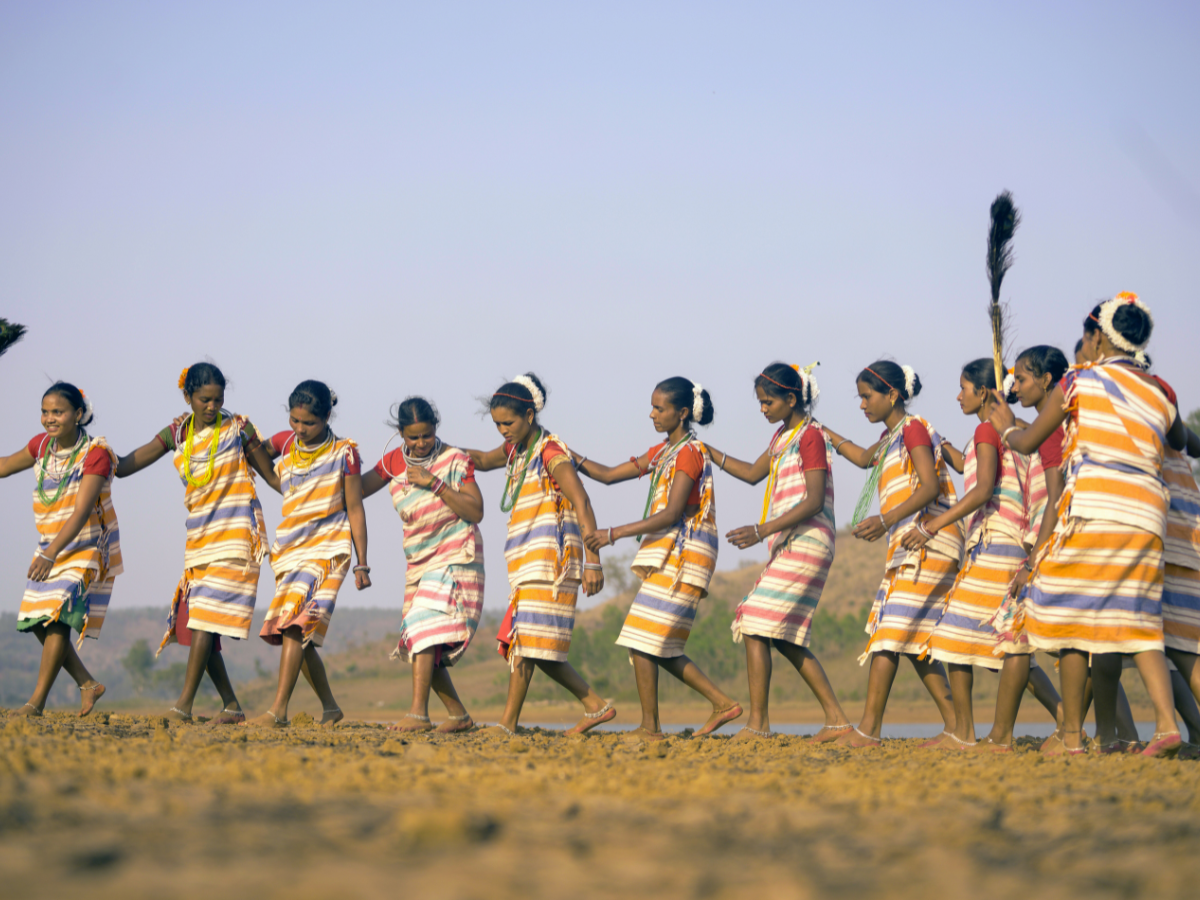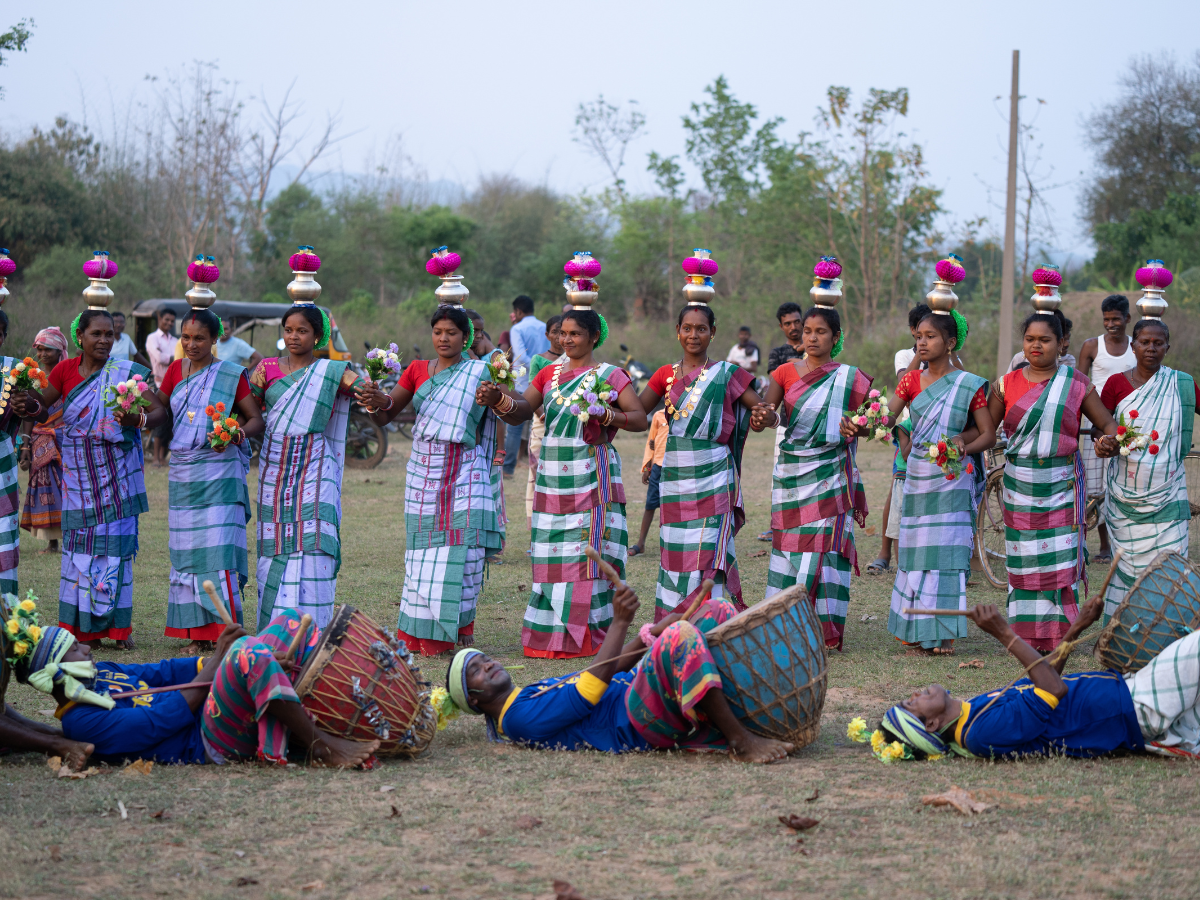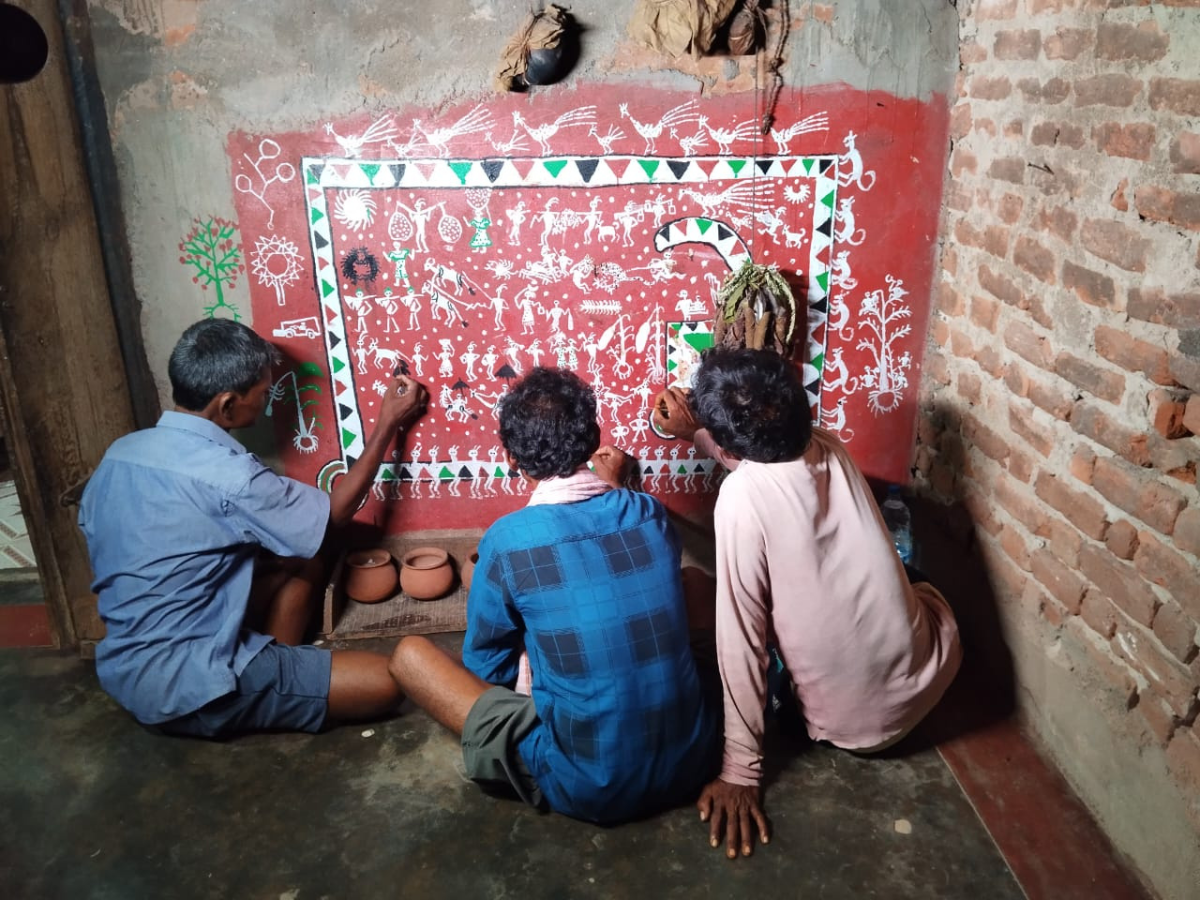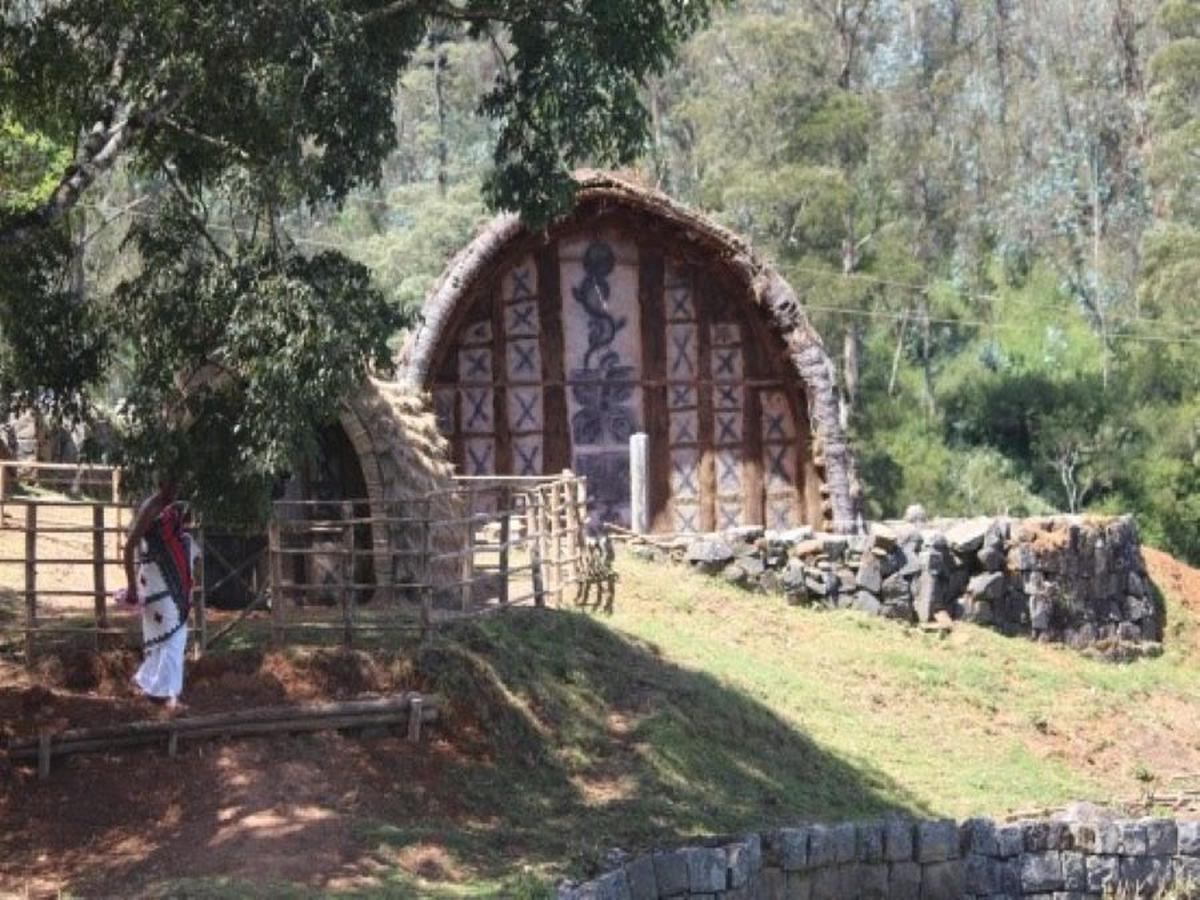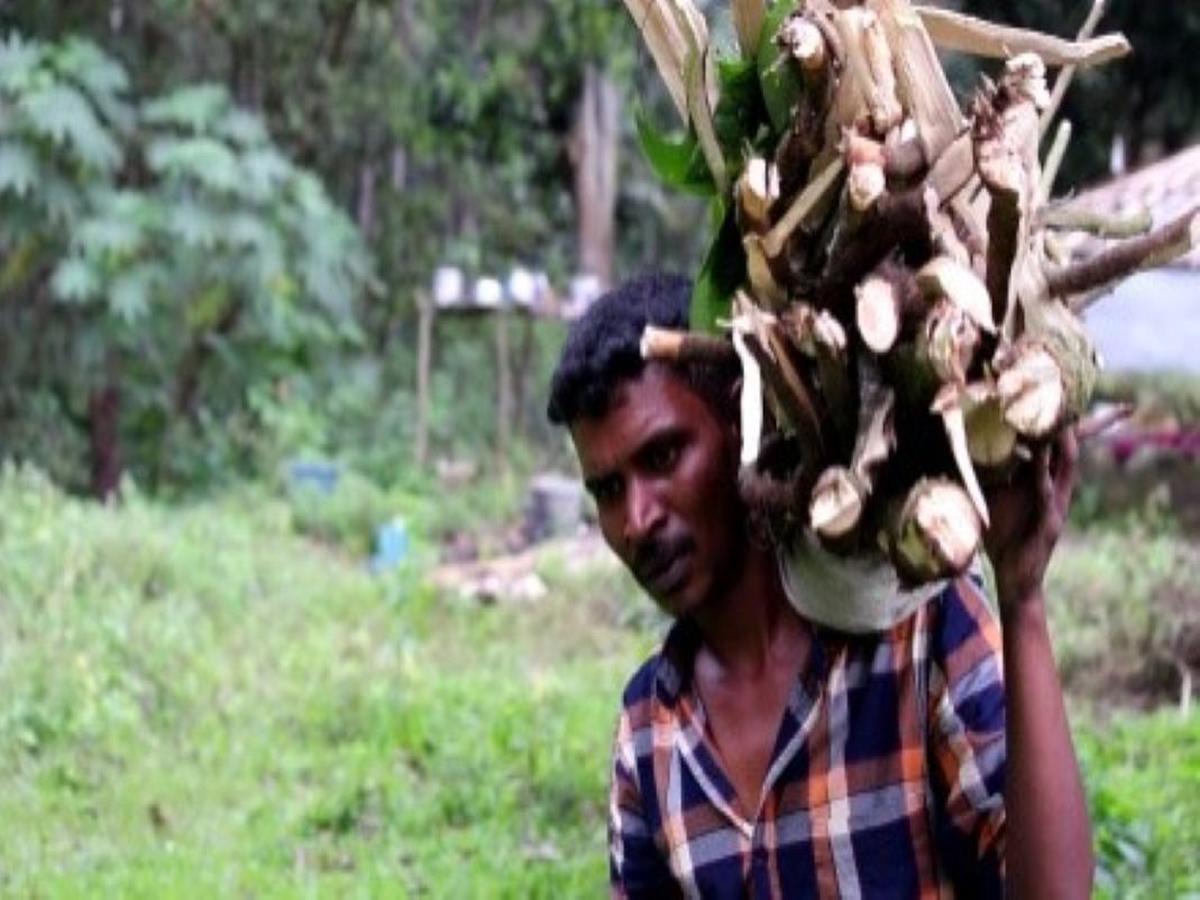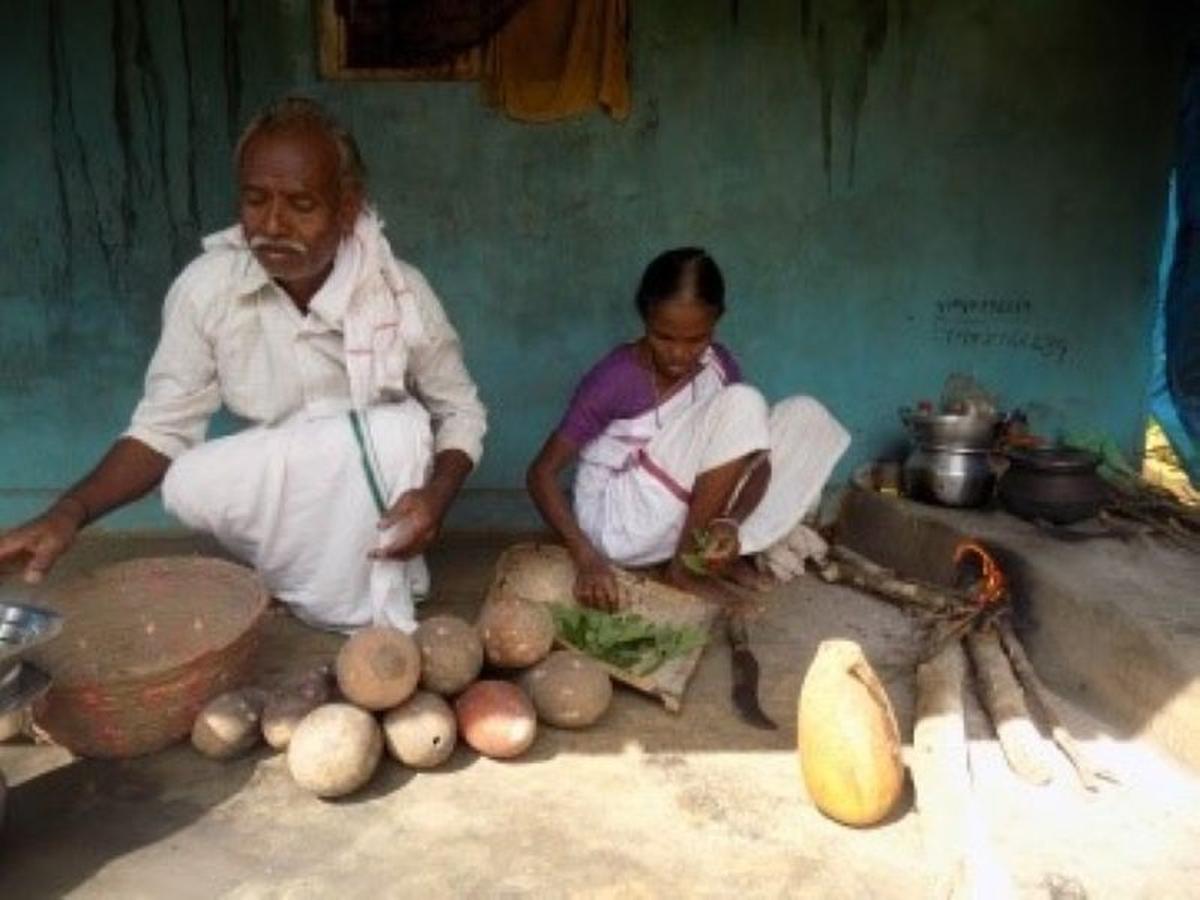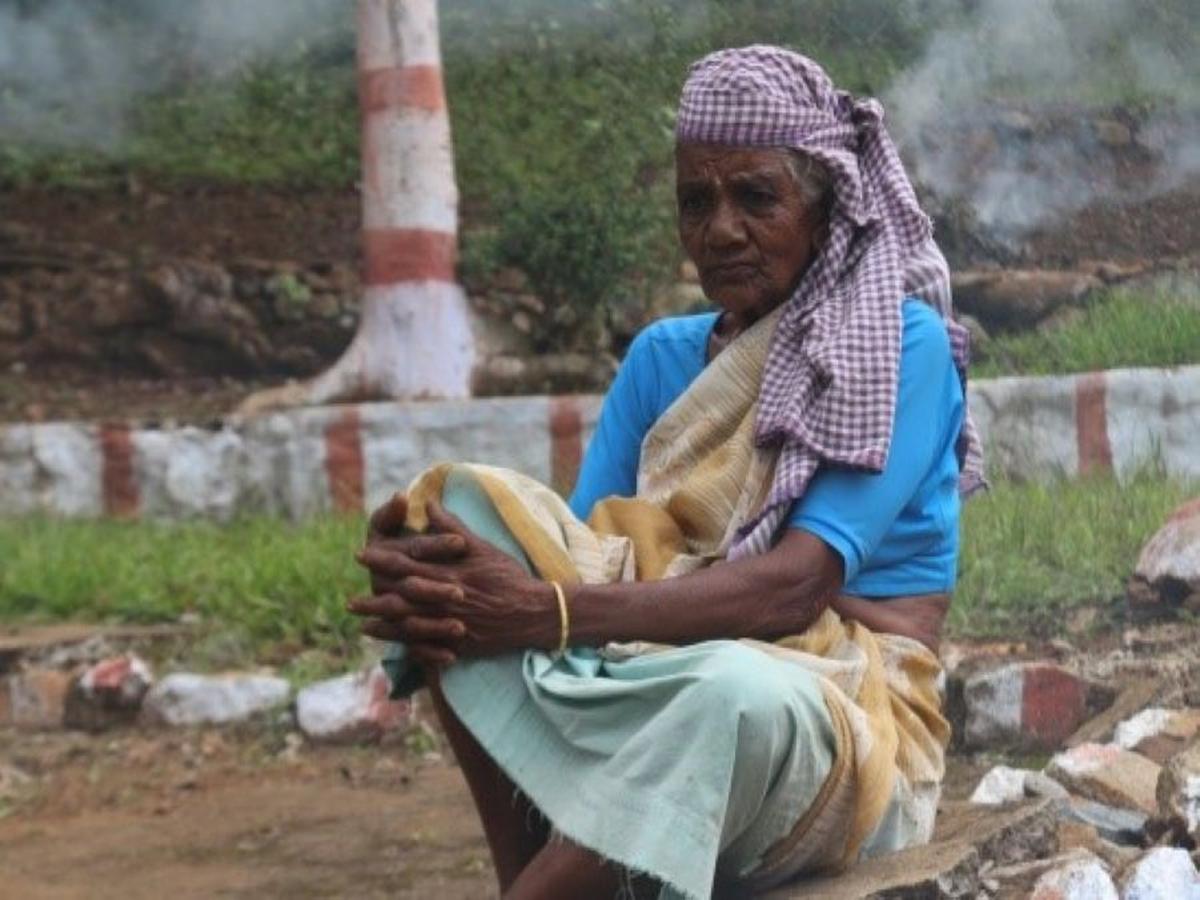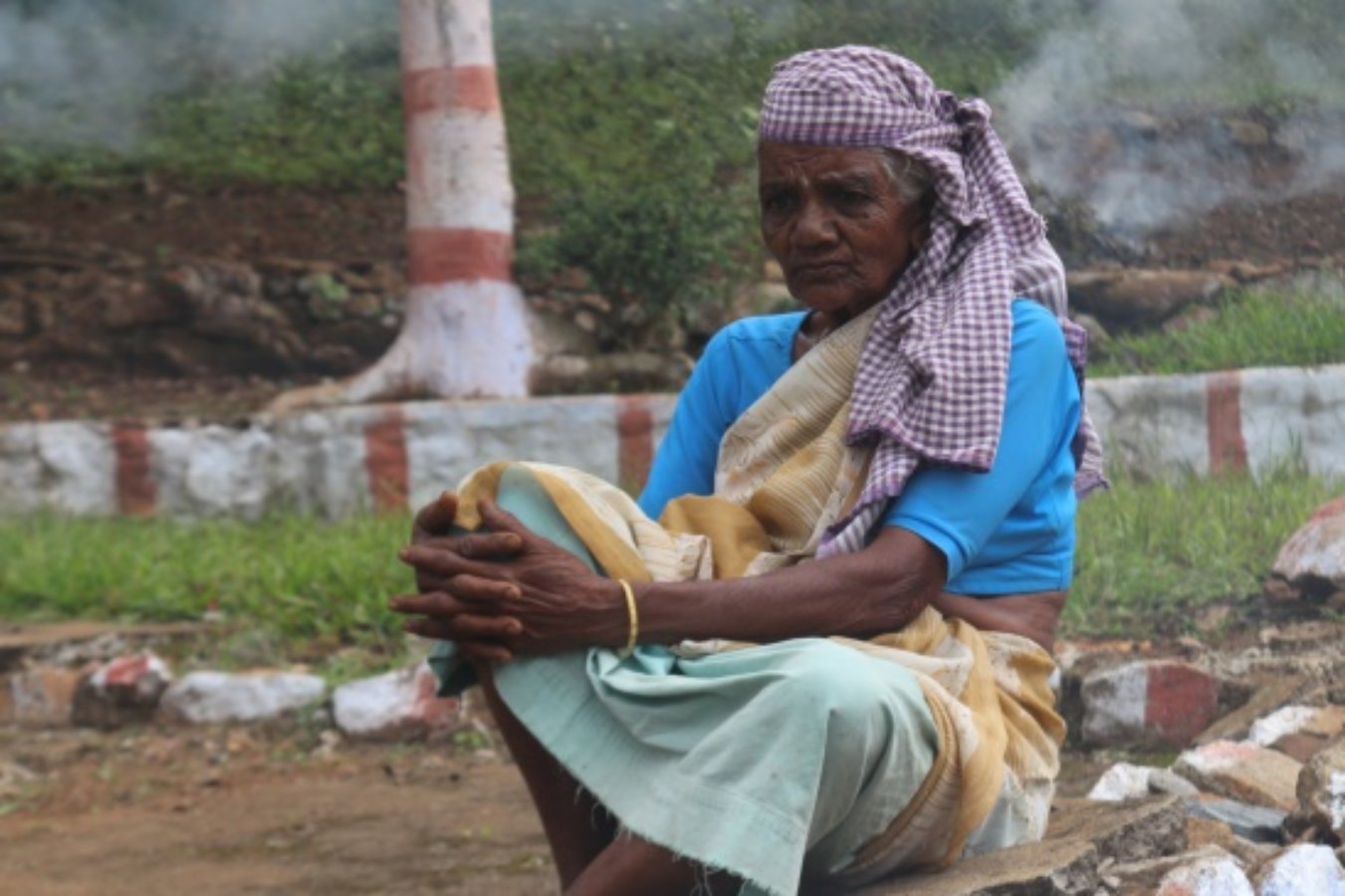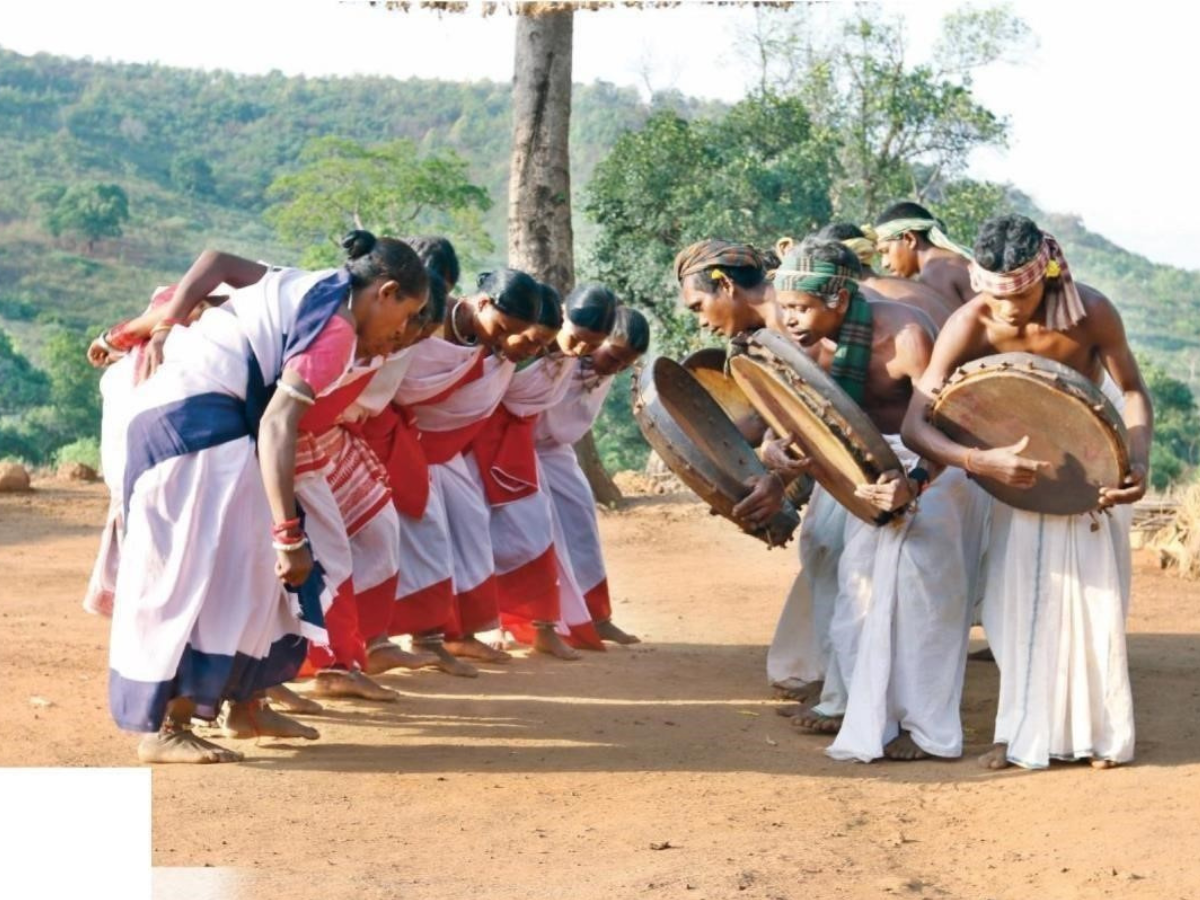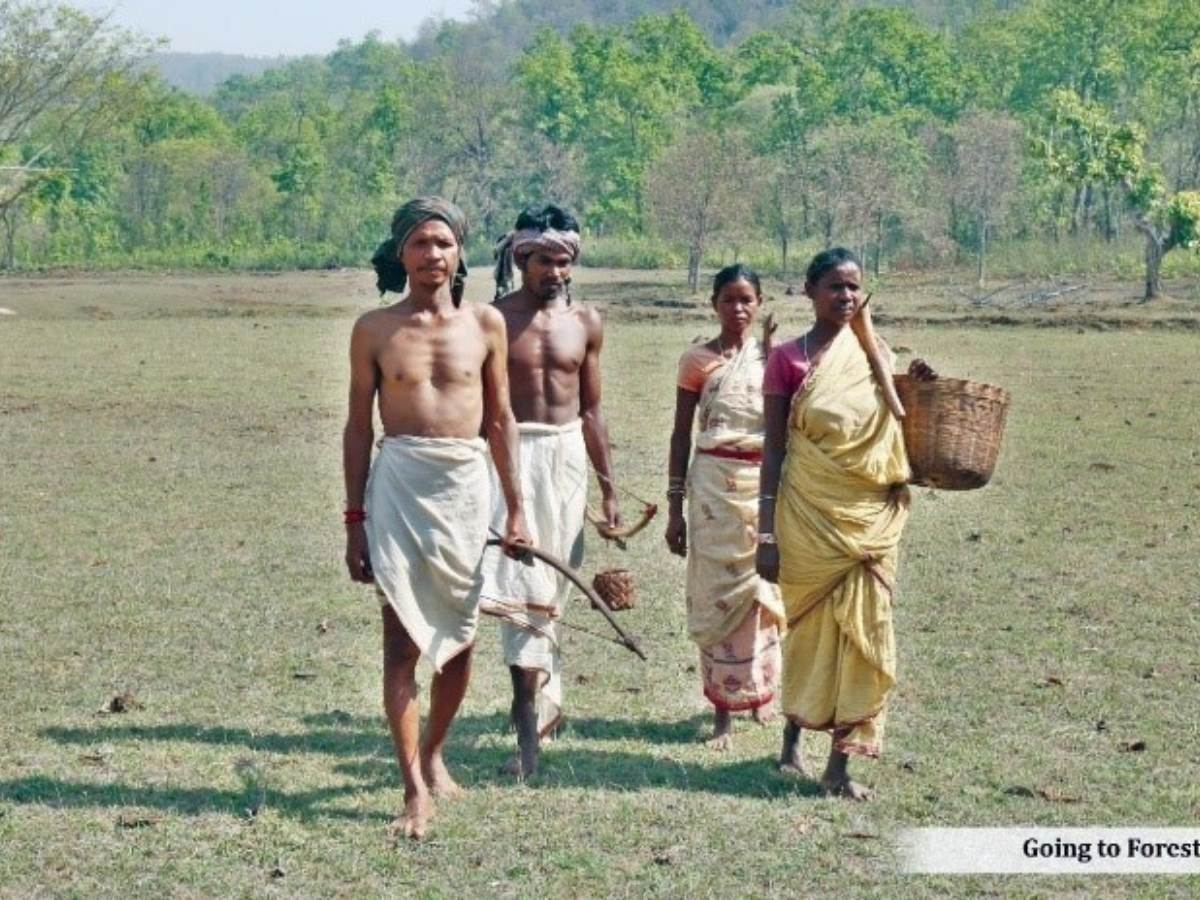Tribal Painting
View moreTribal Dance
View moreTribal Artefacts
View moreTribal Livelihood
View moreTribal Clothing & Textiles
View moreToda Textile and Clothing
The embroidery done by Toda tribe is known for its red and black designs on white cloth which is a benchmark of quality craftsmanship. They have a GI certification for Toda Embroidery which they received in 2008. It is created on a range of items such as cushions, mats, key chains, bangles, handbags, table cloths and much more. The time taken to create the embroidery varies from the best part of two months to a week for the smaller purses. There is a counting of threads on a coarsely woven off-white base, then the designs are stitched on the base with embellished techniques. The final finish is very smooth and appealing.
Paniyan Clothing
Each ethnic group of Paniyan has its own costumes, which are somewhat different, but which are traditionally distinctive. Men usually wear the ‘Mundu’ (lower garment). The women wear the ‘Kuppiri’ (upper cloth), separating it into lower and upper garments. Women commonly wear jewelry including palm leaves and seeds 'Kaidha olai' chakka olai, manjadikkuru(Circassian Seed) earrings, and 'Mukku potti' (a decorative nose ring).
Clothing of Kota Tribe
The traditional attire of the Kota people is a representation of simplicity and cultural identity. Traditional men's attire includes an upper garment called ‘Varadu’, and a lower garment called ‘Mundu’. The Mundu can be paired with a dupatti for women. Traditionally they do not wear coloured garments and use white or earthy garments instead. A unique cultural behaviour marks the point of transition for a young woman of the Kota people. At approximately 18–19 years old, she begins tying her hair with a Mandoo leaf. This cultural practice marks the transition point into adulthood and is celebrated with the whole community and continued for the remainder of her life.
Kattunayakan Clothing
Traditionally, a 'kuppigi' is worn by the Kattunayakan community as an upper garment and a 'mundu' is worn as a bottom garment. Both men and women decorate their bodies with symbolic tattoos, many representing cultural beliefs. They attend temple festivals, such as Mariamma, Lambalakottai, and Yermadu, and such rituals offer numerous spiritual opportunities. The community leader is referred to as the 'Karnavar,' which is the elder male member of the community. He plays an important role in the community, such as leading social and religious events, settling disputes, and ensuring continuity through customary practices and ceremonial leader.
Material Used in Thuma (Skirt)
The Thuma is made of cotton, wool, and zari threads, allowing it to be ventilated while comfortable enough for colder weather. It has a glossy finish due to zari threads imparting an indelible character to the garment visually. The mixture can be termed as a traditional skirt that is comforting, durable, and good to the eye, suiting the richness of the place and dexterity of the people.
Adi Tribe’s Attire
The Adis are one of the most populous tribes in Arunachal Pradesh, occupying mostly the temperate and subtropical regions of the state. The tribe has a rich cultural tradition very much in tune with nature, which, in turn, impacts all of their social behaviors and customs and rituals. The tribe thrives on subsistence farming, along with traditional handcrafting, folklore singing, and diverse festivals, all of which contribute to this multi-ethnic repository of Arunachal Pradesh.
Rengma Naga Clothing & Weaving Traditions
Men of Rengma have a traditional accessory in form of a loincloth known as Nzanyan and the other item is a headgear called Pihu. The headgear is decorated with feathers and is used mostly at ceremonies/festivals and dances. Men use a long scarf called Phehong to drape over their shoulders. Although modern clothing is prominent, it is still used during some of the cultural events since it emphasizes Rengma heritage and identity.
Mising Traditional Attire & Weaving
Gadu is a dense, hand-woven shawl that is of considerable cultural significance to the Mising tribe. Mostly, it is used in winters or on occasions like festivals and ceremonies. It is made on the traditional loom with intricate designs. Its basic style consists in natural colors in geometric patterns, with the characteristic signs of Mising weaving techniques. That's why it is a symbol of warmth, hospitality, and social status in Mising society. It is generally exchanged as a gift during weddings and community gatherings, representing the skills passed down through generations.
Traditional textiles of Tiwa Tribe
The Thongali is a traditional belt woven by the Tiwa women. The material is designed mainly black and deep brown on a white background. The border is decorated with geometric motifs, and the body has chevron patterns. The long fringes on the ends add to its beauty, making the Thongali an important tribal accessory.
Rikhousa - Traditional textile of Dimasa Tribe
A Rikhousa bright yellow wrap is traditionally worn by Dimasa women for dances and festivals. The textile features beautiful double bright red borders to go with its vibrancy. This Rikhousa is one of the most important cultural wears, which stand for happiness, tradition, and the rich weaving tradition of the Dimasa tribe.



